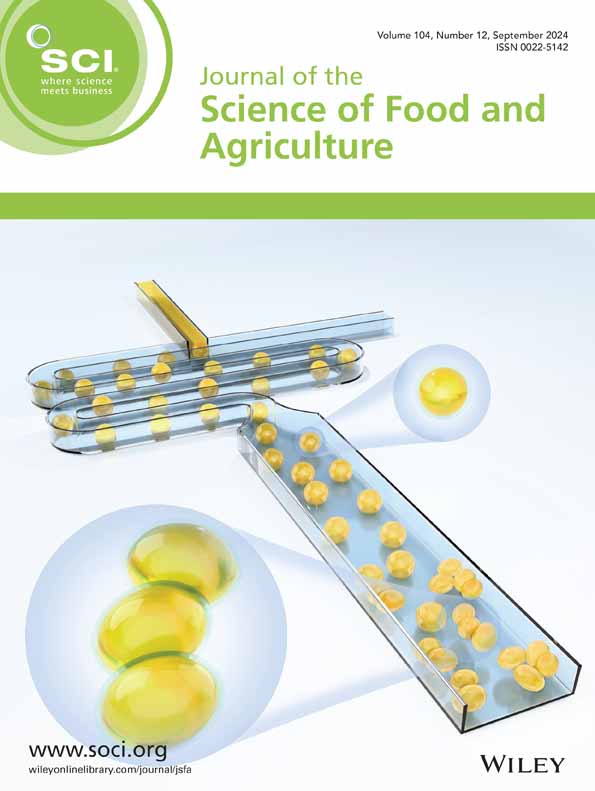H R Bhandari, Kalyani Gorrepati, Sanket J More, Yogesh P Khade, Ram Dutta, Vijay Mahajan
求助PDF
{"title":"Towards better processable onions: determinants and genetic improvement strategies.","authors":"H R Bhandari, Kalyani Gorrepati, Sanket J More, Yogesh P Khade, Ram Dutta, Vijay Mahajan","doi":"10.1002/jsfa.70174","DOIUrl":null,"url":null,"abstract":"<p><p>Onions are used in culinary preparations worldwide due to their distinctive flavor. The onion-processing sector plays a key role in the economies of many countries, supporting both local agriculture and the food industry. Minimally processed onion-based products are suitable for modern lifestyle demands but do not compromise taste and are experiencing steadily increasing demand. All types of onion can be processed but a specific group, termed 'dehydrator' onions, possesses traits that support efficient processing and high recovery of finished products, ensuring economic viability for processing units. Key traits of dehydrator onions include white skin, high total soluble solids (TSS), high dry matter content, increased pungency, suitable sugar composition, and enhanced storability. White onions are particularly well suited for processing compared with red onions. Few studies have investigated the genetic mechanisms underlying these traits, limiting efforts to breed dehydrator-type white onion varieties. However, some research has highlighted the influence of environmental factors and agronomic practices on trait expression. Targeted agronomic interventions can enhance not only the quality and processing efficiency of onions but also their resilience to environmental challenges. This review focuses on breeding and agronomy of onions that are specifically suited for processing. It leverages available genetic information on their traits and applies knowledge of agronomic and management practices that influence their expression. The review also provides a foundation for targeted, effective research initiatives aimed at improving the understanding and cultivation of white onions, ultimately benefiting researchers, stakeholders, and the onion-processing industry. © 2025 Society of Chemical Industry.</p>","PeriodicalId":17725,"journal":{"name":"Journal of the Science of Food and Agriculture","volume":" ","pages":""},"PeriodicalIF":3.5000,"publicationDate":"2025-09-13","publicationTypes":"Journal Article","fieldsOfStudy":null,"isOpenAccess":false,"openAccessPdf":"","citationCount":"0","resultStr":null,"platform":"Semanticscholar","paperid":null,"PeriodicalName":"Journal of the Science of Food and Agriculture","FirstCategoryId":"97","ListUrlMain":"https://doi.org/10.1002/jsfa.70174","RegionNum":2,"RegionCategory":"农林科学","ArticlePicture":[],"TitleCN":null,"AbstractTextCN":null,"PMCID":null,"EPubDate":"","PubModel":"","JCR":"Q1","JCRName":"AGRICULTURE, MULTIDISCIPLINARY","Score":null,"Total":0}
引用次数: 0
引用
批量引用
Abstract
Onions are used in culinary preparations worldwide due to their distinctive flavor. The onion-processing sector plays a key role in the economies of many countries, supporting both local agriculture and the food industry. Minimally processed onion-based products are suitable for modern lifestyle demands but do not compromise taste and are experiencing steadily increasing demand. All types of onion can be processed but a specific group, termed 'dehydrator' onions, possesses traits that support efficient processing and high recovery of finished products, ensuring economic viability for processing units. Key traits of dehydrator onions include white skin, high total soluble solids (TSS), high dry matter content, increased pungency, suitable sugar composition, and enhanced storability. White onions are particularly well suited for processing compared with red onions. Few studies have investigated the genetic mechanisms underlying these traits, limiting efforts to breed dehydrator-type white onion varieties. However, some research has highlighted the influence of environmental factors and agronomic practices on trait expression. Targeted agronomic interventions can enhance not only the quality and processing efficiency of onions but also their resilience to environmental challenges. This review focuses on breeding and agronomy of onions that are specifically suited for processing. It leverages available genetic information on their traits and applies knowledge of agronomic and management practices that influence their expression. The review also provides a foundation for targeted, effective research initiatives aimed at improving the understanding and cultivation of white onions, ultimately benefiting researchers, stakeholders, and the onion-processing industry. © 2025 Society of Chemical Industry.

 求助内容:
求助内容: 应助结果提醒方式:
应助结果提醒方式:


